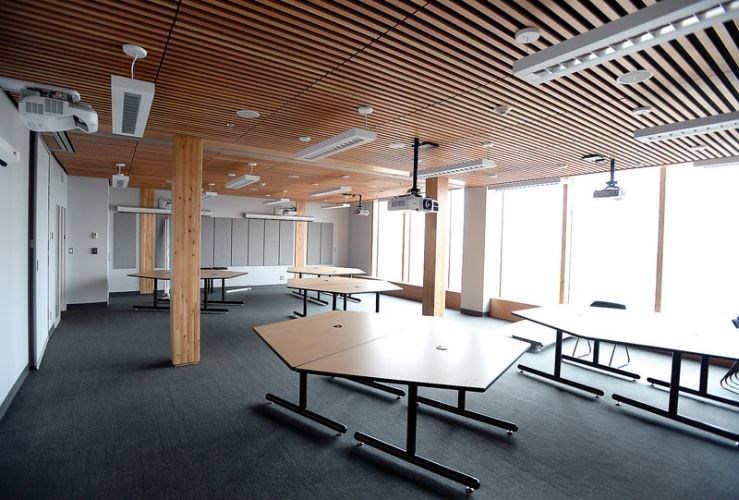There was nothing wooden about the reaction to the Wood Innovation And Design Centre, when the engineers and architects of the province got to share their reactions to the new building.
The Prince George structure was opened on the final day of October, less than six months before the annual Wood Design Awards handed out by the B.C. chapter of Wood WORKS!, a division of the Canadian Wood Council, one of the nation's leading agencies promoting the use of wood in commercial, industrial and institutional construction. When the trophies were handed out, WIDC was easily the tallest tree in the awards forest.
There were nine awards given in the standard wood design categories, and WIDC did not receive any of those nor did any other northern B.C. construction projects, but when it came to the specialty awards, the big sticks went to bat for WIDC.
The engineer trophy went to Eric Karsh of Equilibrium Consulting Inc. in Vancouver. He was cited for groundbreaking use of of cross-laminated timber (CLT) in the building of Ronald McDonald House BC.
"Known and respected internationally, he shows his love of using wood through innovative structural designs," said Lynn Embury-Williams, executive director of Wood WORKS! BC. "He has developed the use of curved, organic shapes, cut from sheets of three-ply cross-laminated timber to form elegant roof and column elements at the UBCO Fitness and Wellness Centre in Kelowna. Mr. Karsh also co-authored The Case For Tall Wood Buildings report which introduced an innovative mass timber panel construction concept. Mr. Karsh was also the structural engineer of record for the remarkable Wood Innovation And Design Centre in Prince George."
That award was followed by the architect trophy which went to Michael Green Architecture.
"This firm is always working on the next extraordinary wood structure, and has an impressive line-up of projects ranging from airports in Prince George and Ottawa, to a landmark social welfare facility fashioned from CLT," said Embury-Williams. "The recently completed Wood Innovation And Design Centre, the tallest contemporary wood structure in North America, demonstrates economical and repeatable technologies for building high-rise structures with timber. Mr. Green was also the co-author for The Case For Tall Wood Buildings which was the subject of his high profile TED Talk."
Green wasn't finished being honoured for the WIDC project, however.
"The Wood Innovation Award recognizes creative and innovative approaches in the use of wood in building and product design," said Embury-Williams. This year the winner was Michael Green for the WIDC work he did. "The structure represents a milestone in the future of tall wood buildings. The project introduces new methods of working with mass timber panels, specifically cross- laminated timber, and is a true showcase for B.C. wood products."
The jury was a panel of experts in forestry, architecture and design. Collectively they described the WIDC project as "an exquisite interplay of structure and finish to provide a translucent, warm and inviting structure. The attention to detail is evident throughout, and provides pleasing aesthetic patterns which are both convincing and alluring."
There were 12 categories for the 2015 Wood Design Awards, and together they combined to attract 107 nominations. It was the 11th time the awards have been bestowed for the best of wood construction in the province.
"Each and every one of these projects is spectacular in its own right, and demonstrates how wood can be used in innovative ways as an architectural and structural building material," said Embury-Williams. "Wood products and systems have become the material of choice in mid-rise residential as well as for the institutional, commercial and industrial sectors. This is a paradigm shift, and it's encouraging, as our communities and cities want more sustainable and healthier built environments. Here in BC, designers and builders are leading the way by using wood because it is cost-effective; is renewable; has a smaller carbon footprint; and because it creates beautiful and comfortable spaces where people love to live and work."



